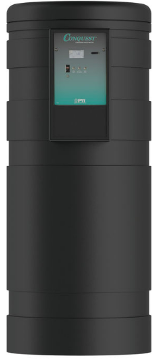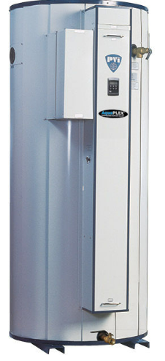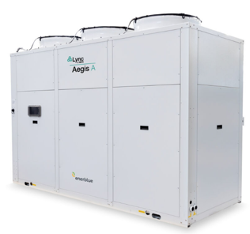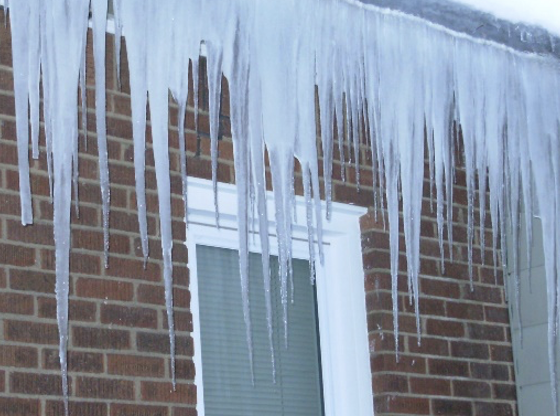 Air source heat pumps are beginning to get attention in conversations among engineers in the northern climates. I appreciate everyone’s patience as you opened this blog over the last couple of months to have the story unfold. Today, I will use an example building to address the “elephant in the room,” comparing the equipment required for heat pump water heaters vs. electric water heaters vs. gas fired water heaters.
Air source heat pumps are beginning to get attention in conversations among engineers in the northern climates. I appreciate everyone’s patience as you opened this blog over the last couple of months to have the story unfold. Today, I will use an example building to address the “elephant in the room,” comparing the equipment required for heat pump water heaters vs. electric water heaters vs. gas fired water heaters.
The Example Apartment Building
In Ann Arbor Michigan, the architect and engineer are asked to design a 4-story apartment building with a total of 100 units expecting to serve 215 people. Each apartment has a kitchen with a dishwasher and a single bathroom with a private low flow shower. Each apartment also has a washing machine. There is a handful of other hot water fixtures. We expect each floor to have 4 hot water supply lines and the recirculation rate from each loop will be about 0.75 GPM.
The owner has requested a solution that reduces the carbon output of the building. There are no current codes limiting the use of gas fired appliances in Ann Arbor. The engineer wants to look at a traditional gas fired tank type water heater and the same solution using electric water heaters. The third option to look at is commercial heat pump water heaters. The engineer decided to explore a heat pump water heater using R-744 refrigerant.
The engineer wants a minimum storage temperature of 140°F and will use a mixing valve to meet the temperature requirements. The hot water return temperature will be designed at 126°F.
Gas Fired and Electric Solutions
The load calculations for domestic hot water can be described as bordering on “art backed by science”. When we are designing a comfort heating system, the heat transfer rate of building materials is known. The impact of people on the load is important but not usually the determining factor. In service water or domestic hot water calculations it is all about people. Family size, work schedules, home routines, various events and holidays all contribute to variations in sizing.
The American Society of Heating, Refrigeration, and Air Conditioning Engineers (ASHRAE), Systems Handbook, chapter 50 has tables and figures that are the basis for many of the manufacturer’s sizing programs. ASHRAE will tend to indicate much more storage than we see in the sizing programs. PVI by Watts has a program online which is branded with the OptiSize™ name. Using that program, we have the following solutions.
It is interesting to note that the gas fired storage solution above meets the ASHRAE definition of a tankless water heater since the recovery capacity is so great compared to the storage volume. When we look at the heat pump water heater there will be much more storage required. A heat pump can never be used as a tankless solution. The igniting of gas in an appliance has significantly more instantaneous capacity than pulling heat out of the air.
Heat Pump Water Heater Solution
The heat pump solution was determined using the Lync® by Watts Aegis A air-source heat pump water heater. The sizing is based on a modified ASHRAE platform but can also be adjusted for the recovery rate determined by the engineer’s in house calculations. The solution is as follows.
What Happens If We Lose Power?
What if the electric power goes out in a storm or emergency? Both the heat pump and electric resistance water heaters are electric. A backup generator would have to handle both the heating of the building and the service water (hot water) load. This may be the time to have a talk with the owner. It may be the time to get real. The hot water load is based on peak demand. We have 1000 gallons of stored water available when the power goes out. If we temper the kW backup resistance load it may help the emergency generator cost and size.
If the engineer wishes to operate at full capacity, for example at a hospital, the Durawatt solution will require 648 kW of generator capacity, whereas the Aegis solution will only require approximately 60 kW of generator capacity plus the capacity for the recirculation heater.
Hot Water Recirc. Tank
The recirculation load is about 84,000 BTUH. This obviously changes with the layout, pipe size, and design temperature difference. I chose the load with some simple assumptions. The recirc. load requires a separate tank. Read more about the recirc tank in the blog: Heat Pump Water Heaters: Hot Water Recirculation (Part 6)
Low Outdoor Air Temperature (OAT) Backup
We understand that the R-744 heat pump solution was sized for very low outdoor temperatures. That said, our Ann Arbor Michigan project will have some hours when the temperature is below -4°F. We will require backup as we discussed in the last Monday Morning Minutes.
I chose 63% for both backup and standby. The reasons come out of the ASHRAE Systems handbook chapter 50. There are several figures for apartments and residential use which show peaks for a couple of hours in the AM and again in the evening. No surprise there. Other than that, the load is 40% or less most of the time. The 63% will have enough for the recharging of the tanks and usage. There may be times when the water at peak load may be tempered but that can be explained in a power outage or record setting low temperatures. The owner should understand the reasons and be aware of the consequences.
Next week we will continue the example system by comparing some pricing schemes and the payback periods.
Part 1: Heat Pump Water Heaters: The Road to Decarbonization
Part 2: Heat Pump Water Heaters: How They Work
Part 3: Heat Pump Water Heaters: Refrigerants and Weather
Part 4: Heat Pump Water Heaters: Temperatures & Storage
Part 5: Heat Pump Water Heaters: Parts & Pieces & Storage
Part 6: Heat Pump Water Heaters: Hot Water Recirculation
Part 7: Heat Pump Water Heaters: Standby Capacity





